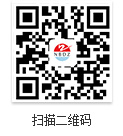Ningbo Dazhong Industrial Chemical Fiber Co., LTD. Polypropylene Drawing Filament: The practical fiber choice in early August!
The high temperature and humidity in early August intertwined, posing multiple tests to the performance of chemical fiber products. The polypropylene drawing filament of Ningbo Dazhong Industrial Chemical Fiber Co., LTD., with its raw material characteristics and process optimization, has demonstrated excellent adaptability in such a season and has become a practical choice in the textile field.
Polypropylene Drawing Filament is made from polypropylene as raw material. After melt spinning, it is produced through a stretching process. During the stretching process, the fiber molecules form an orderly arrangement, endowing the filament with good strength and toughness. Ningbo Dazhong Industrial Chemical Fiber Co., Ltd. pays close attention to the stability of the melt index of polypropylene in raw material selection, ensuring that the fluidity of the spinning melt remains uniform in the workshop environment above 35℃ in early August, providing a stable foundation for the subsequent drawing process and avoiding performance fluctuations caused by differences in raw material batches.
In response to the high-temperature environment in early August, the production process of polypropylene drawn filament was adjusted specifically. The temperature control in the stretching process adopts a zoned regulation method. According to the thermal performance characteristics of polypropylene, the temperatures of the preheating, stretching and setting stages are precisely matched to ensure that the fibers can maintain a stable molecular orientation even in a high-temperature environment. Even if the temperature in the workshop environment fluctuates, the constant temperature system of the equipment can respond quickly to ensure the stability of the drawing ratio, avoid uneven thickness or broken ends of the filament, and guarantee the continuity of production.
High humidity is a notable feature of the production environment in early August, and the antistatic performance of polypropylene drawn filament plays a role here. During the production process, antistatic additives are added to reduce the surface resistance of fibers and minimize the accumulation of static electricity caused by humid air. This feature makes the filaments less likely to stick together during winding and storage, facilitating subsequent textile processing. It also reduces the risk of product quality being affected by static electricity attracting dust, making it particularly suitable for production management in humid environments.
In terms of performance, the mechanical properties of polypropylene drawing filament are suitable for the usage requirements in early August. After moderate stretching, the breaking strength of the fibers is significantly enhanced. The fabric made from it is not prone to damage when subjected to stretching and friction, and has excellent wear resistance. Meanwhile, the fibers retain a certain elastic recovery rate. After repeated stress, they can quickly return to their original shape, reducing the wrinkling of summer clothes and lowering the difficulty of maintenance. This feature enables it to perform stably in high-frequency usage scenarios such as outdoor casual wear and sportswear.
The weather resistance of polypropylene drawn filament has obvious advantages in outdoor applications in early August. The fiber itself has good light resistance and is not prone to degradation or discoloration under strong sunlight. Outdoor products made from it, such as sun umbrellas and tent fabrics, can maintain a stable appearance for a long time. Meanwhile, it has excellent water resistance. Its performance is not affected after contact with rain or sweat. Unlike natural fibers, it will not gain weight or harden after absorbing moisture, ensuring a good user experience in a humid environment.
In application scenarios, the practicality of polypropylene drawn filament is widely reflected. In the field of clothing, it can be blended with cotton, polyester and other fibers to produce lightweight and breathable summer fabrics, which combine the dryness of polypropylene with the comfort of other fibers. In terms of industrial fabrics, they are used to make filter materials, packaging fabrics, etc. Their high strength and moisture resistance are suitable for the industrial demands in the rainy August environment. In the field of decoration, it can be woven into carpets, curtains, etc., which are wear-resistant and easy to clean, making it suitable for frequently used home scenarios in summer.
When storing polypropylene drawn filament, it is necessary to avoid prolonged exposure to direct sunlight or high-temperature environments to prevent fiber aging. It should be placed in a well-ventilated and dry warehouse, away from damp corners, to prevent the silk cakes from absorbing moisture and sticking together. When in use, the textile workshop needs to control the humidity well to avoid tangling during processing due to excessive humidity. At the same time, adjust the blending ratio of the drawing filament according to the fabric's application to balance performance and cost.
The Polypropylene Drawing Filament of Ningbo Dazhong Industrial Chemical Fiber Co., LTD., through raw material control and process optimization, maintained stable performance and processing adaptability in the high-temperature and high-humidity environment of early August, providing a reliable fiber option for the textile and related industries, demonstrating the practical value of chemical fiber products in responding to seasonal environmental challenges.


 Mr. Chen Fei (Mr.)
Mr. Chen Fei (Mr.) 86-574-63550733
86-574-63550733 86-574-63551022
86-574-63551022 dz@dzfibre.cn
dz@dzfibre.cn



